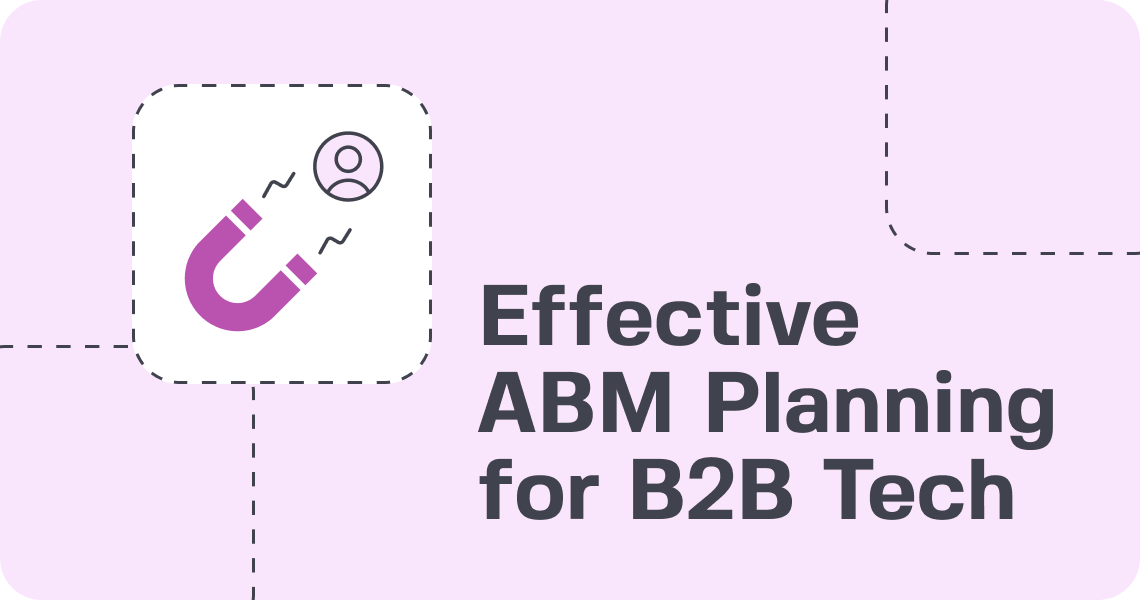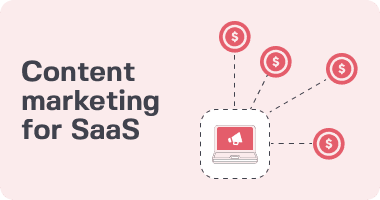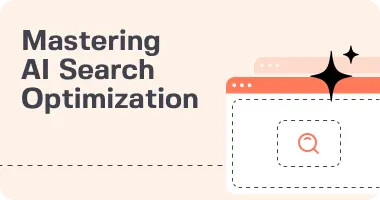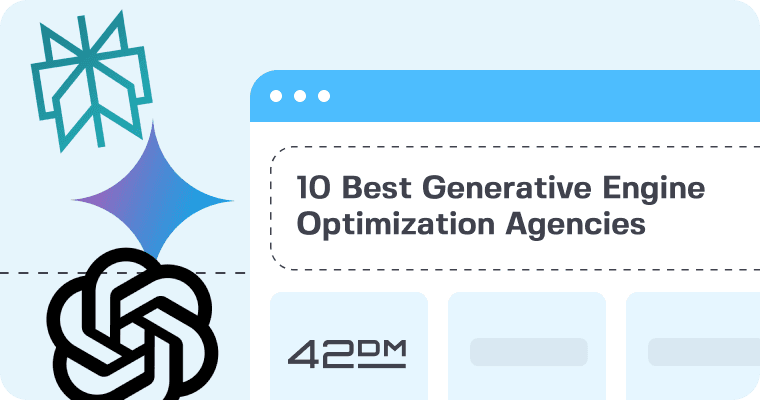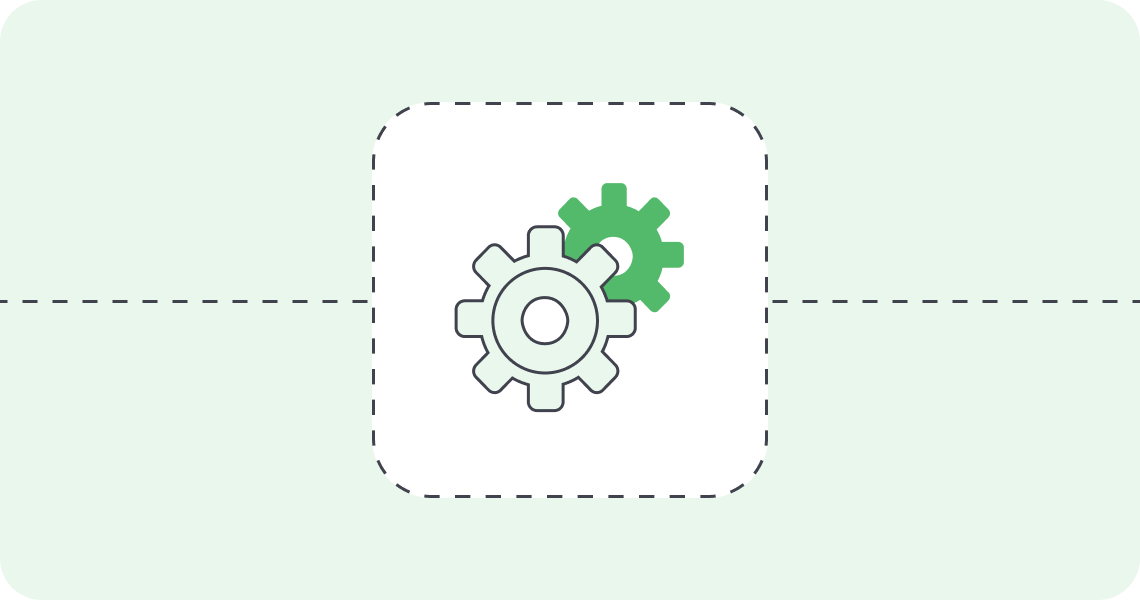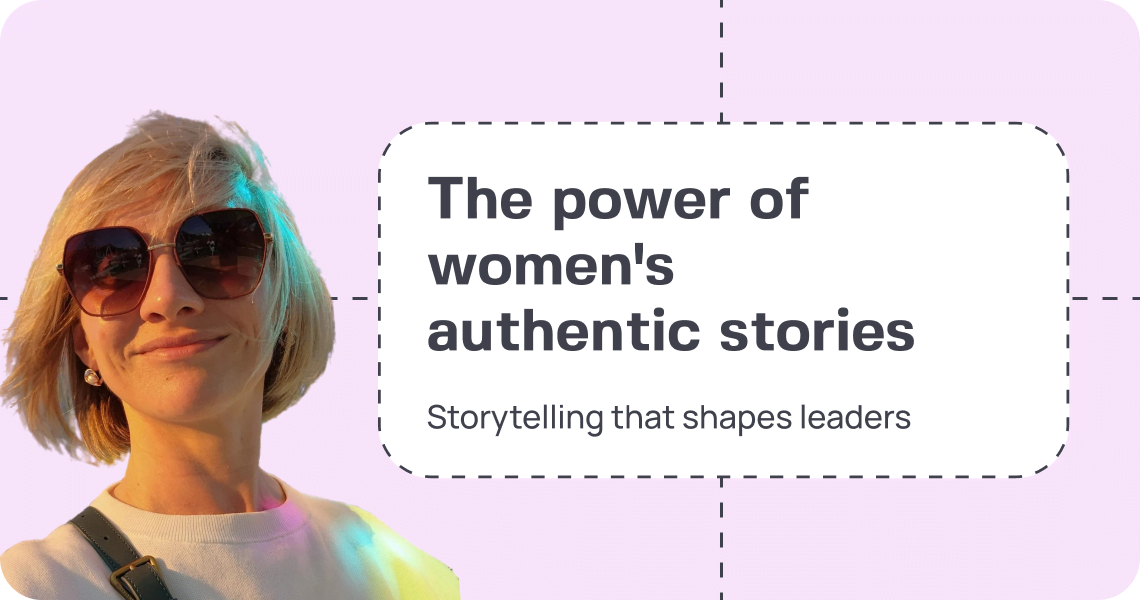Developing brilliant technology is only part of the equation when it comes to success for fintech companies. You also need to attract, impress, and retain customers, as well as scale your efforts through effective content creation and distribution. Content marketing is a key strategy for the growth of fintech companies in 2025. It allows you to produce and distribute effective content, helping your audience move through the sales funnel and become dedicated customers. So, let’s see how to implement it!
Why content marketing works well for the Fintech niche
The unique characteristic of the fintech industry is that products are often so niche that the audience doesn’t know that there is a company offering a particular solution to their problem. In addition, audiences often struggle to understand the product without knowing the sphere in-depth. This problem is compounded when complicated jargon is used to explain the product. One thing is for sure — if people don’t understand something, they won’t trust it.
Thus, the current challenges for fintech are generating awareness about the product and technology, creating trust, and educating the audience along the way. Effective digital marketing efforts are essential to overcome these challenges and ensure that your fintech solutions reach and resonate with the right audience.
What is content marketing?
Content marketing is a strategic marketing approach that focuses on the creation and distribution of hyper-relevant content to attract and retain customers from a particular audience segment. It creates content that targets the true needs of your audience using data-driven insights.
Content marketing is excellent for fintech companies because it helps them be more relevant and interesting for their future users; it can tributes to building a stable process of lead attraction and management. Moreover, content published on websites can drive traffic and generate leads long after its publication. A well-articulated content strategy will guarantee that each content created serves your business objectives and efficiently captures the attention of your target audience.
Content marketing should be one of the main ways to educate the users, explain the product, simplify complex topics, and give third-party opinions that raise trust in your company.
How does content marketing for fintech differ from saas content marketing?
While both SaaS and Fintech companies benefit from content marketing, there are some fundamental differences in its application. In the fintech niche there is a need to form a demand for the product based on audience pain points. Often, fintech companies create a solution to an existing problem, but the challenge is for people to become aware of the solution itself; therefore, the content marketing strategy will focus on educating prospects about available solutions matched to their needs. Therefore, a tailored fintech content marketing strategy is crucial to educate prospects about the solutions available to them.
In the B2B SaaS marketing niche, on the contrary, the demand is already formed and the challenge is to get the top spot within a specific cluster. Here, a content marketing strategy is useful to attract prospects with hyper relevant content that satisfies their needs better than the competition.
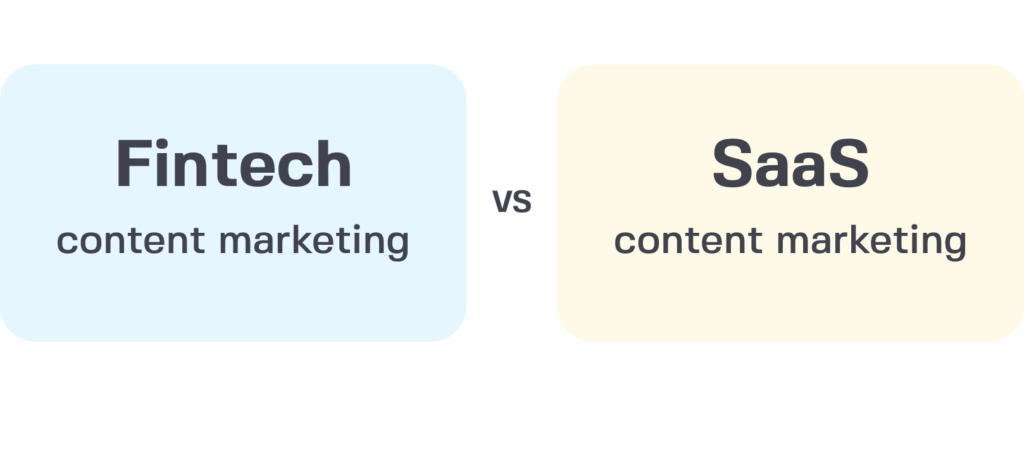
How to Understand Your Target Audience
Understanding your target audience is a fundamental element of devising an effective content marketing strategy. This includes theidentification of your ideal customer persona, comprehension of their needs and pain points, and creation of content that resonates with them.
Identify Your Ideal Customer Persona
It involves elaborating on your target audience with demographic details, including age, gender, and location, down to psychographic elements, such as interests, values, and lifestyle. Your understanding ofthe ideal customer can be helpful in the creation of content that directly speaks to the needs and interests of your target audience.
For fintech, it could be research into the financial goals, pain points, and behaviors of an audience. Therefore, for example, an investment service could be offering to a young professional who wants to invest in the stock market but does not have much experience. It is here that, by developing content for your personas, you will be better placed to address their specific pain points and arm them with valuable insights to help them along their investment journey.
Understand Customer Needs and Pain Points
Understanding customer needs and pain points can be through researching and understanding the challenges facing your target audience. This could be in terms of online analytics, surveys, or focus groups. By knowing the needs of customers and areas where they encounter problems, you will be in a position to develop content tomeet those particular needs, therefore offering solutions to their problems.
For fintech companies, this may involve researching the financial pain points and challenges their target audience faces, such as managing debt or saving for retirement. In this way, fintech companies can build trust and credibility with their target audience by developing content that speaks directly to the financial challenges that customers are experiencing. This helps a company not only in gaining trust but also positions your brand as an authoritative and trusted source people can rely on for financial advice and solutions.
Define SMART Goals for Content Marketing
Setting goals for content marketing means establishing specific objectives for your content marketing strategy. For instance, a fintech company may establish a goal of increasing website traffic by 20% within the next six months by creating high-quality content that resonates with their target audience.
Following are a few examples of smart goals regarding content marketing:
- Drive more traffic to our website by increasing 20% within the next six months, using high-quality content that hits the mark among targeted audiences.
- Increase engagement on social media by 50% within three months through content that speaks to the needs and interests of the target audience.
- Improve lead generation by 30% in the next nine months by creating high-quality content that addresses the pain points of our target audience and offers solutions to their problems.
This structured approach not only helps track progress but also allows for necessary adjustments to optimize results.
Set SMART Goals for Content Marketing
Setting smart goals in content marketing involves the specification of specific, measurable, achievable, relevant, and time-bound objectives within your content marketing strategy. These may help keep you focused so that all content marketing efforts are pointed toward the success of general business goals.
Challenges of fintech and how to deal with them
Choosing content marketing as a scaling technique for your business is something we can definitely recommend; however, the business specific niche of fintech companies can differ significantly, creating a range of challenges.
Here is how we suggest dealing with some of them based on experience with 42DM clients.
Low demand: tips on how to broaden marketing efforts
There are two types of demand you can work with — those based on your brand and those based on key services you offer.
To get traffic from demand that is not related to your brand, you should identify and work with the target keyword. A target keyword is a particular word or phrase that a website knows potential traffic/customers may use when utilizing a search engine and seeking out the services that the particular website offers.
To broaden your marketing efforts and attract more traffic, you should focus on the pain points of your target audience and then work with these pains to move your lead through the content marketing funnel. Partnering with a content marketing agency can provide the expertise and resources needed to effectively broaden your marketing efforts and attract more traffic.
First, perform an in-depth audience analysis and identify their key pains and needs. Then, you should identify what the focus problems of your consumers are.
The next step is to create content based on these pain points for each stage of the buyer’s journey — awareness, consideration, and decision.
For example, during the awareness stage, educate your audience on the essence of their problems; the reasons their problem arises. Then, during the consideration stage, it is time to explain the available solution — your product or services — and how it satisfies the needs of your target audience. During the decision, focus on the advantages of your solution.
Here are the types of content you can create to help leads move through the content marketing funnel
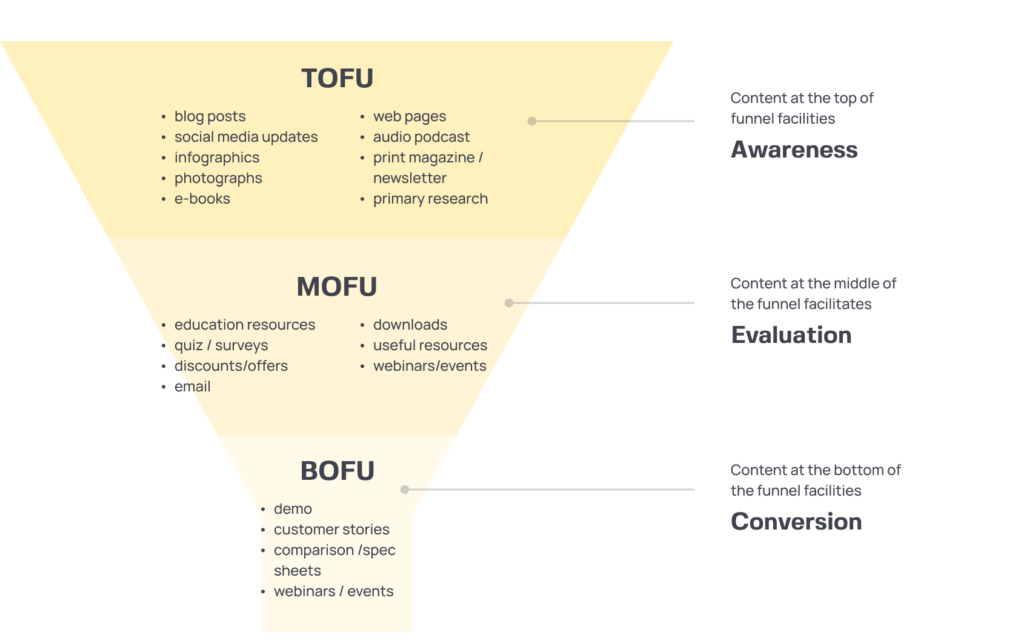
A pro tip: at the early stages, instead of slowly producing long and expensive expert blog posts, create a glossary of industry-specific terms. This will help to create content mass for your website, widen SEO semantics, and attract a broader audience, as well as giving them an intro to understanding your content in the future.
Low brand recognition: target audience pains
Another challenge that may arise in your fintech marketing is low brand recognition. You should work on building your brand consistently through PR methods. While planning your efforts on brand awareness, remember to focus on the way your brand solves the pains of your users.
In fintech, especially with an innovative approach, potential customers are often unaware that the solution you are developing exists. Adapting a customer-centric approach at each stage of your content marketing funnel should be an undeniable part of your brand identity.
A product with one keyword: split the huge and difficult keyword by GEO for content creation
While choosing a keyword to focus on, carefully analyze its difficulty and volume. If your product or service is so specific that you can’t think of additional target keywords, split it by geo and work on getting top positions in each of your target countries.
For example, one of our clients came to us providing PEPPOL infrastructure cloud services. It is a super niche sphere, and targeting keywords other than PEPPOL itself doesn’t make any sense. To get top positions in global PEPPOL search rankings we would have to use enormous resources and compete with industry giants. However, when we focused on getting top rankings in just the target countries of our client — like Norway — we were able to reach top positions with the help of content marketing.
Moreover, the audience is more likely to trust a brand that shows expertise within their exact market rather than globally. You can show this expertise through educational and how-to content, targeted towards the geo in question. A fintech marketing agency can help you navigate these challenges by providing tailored strategies and expertise in your specific niche.
Huge keyword diversity within the cluster: build up an ecosystem to cover all commercial keyword opportunities
It may be that your product can be helpful in a wide range of cases. In that case, you need to use SEO to create a keyword cluster — a group of keywords that represent searches with similar intent. It may be that your potential customers can use a huge variety of words and phrasing to search for your product. In that case, we suggest building up an ecosystem to cover all commercial keyword opportunities so you do not lose any potential traffic.
To use the most of the demand that is relevant to your company’s offerings, go in depth within your chosen cluster. Analyze and collect all the possible search variants that you provide a solution for and then build up hyper-relevant content about it. High-quality content marketing is essential to ensure that your content stands out and effectively engages your audience.
Then, use your research findings to build a pillar page ecosystem. Сreate a main page connected to your general expertise and main keywords, and then include links to related blog posts or landing pages. Here is an example from our clients who decided to go in depth in the “healthcare software” cluster – https://gloriumtech.com/healthcare/
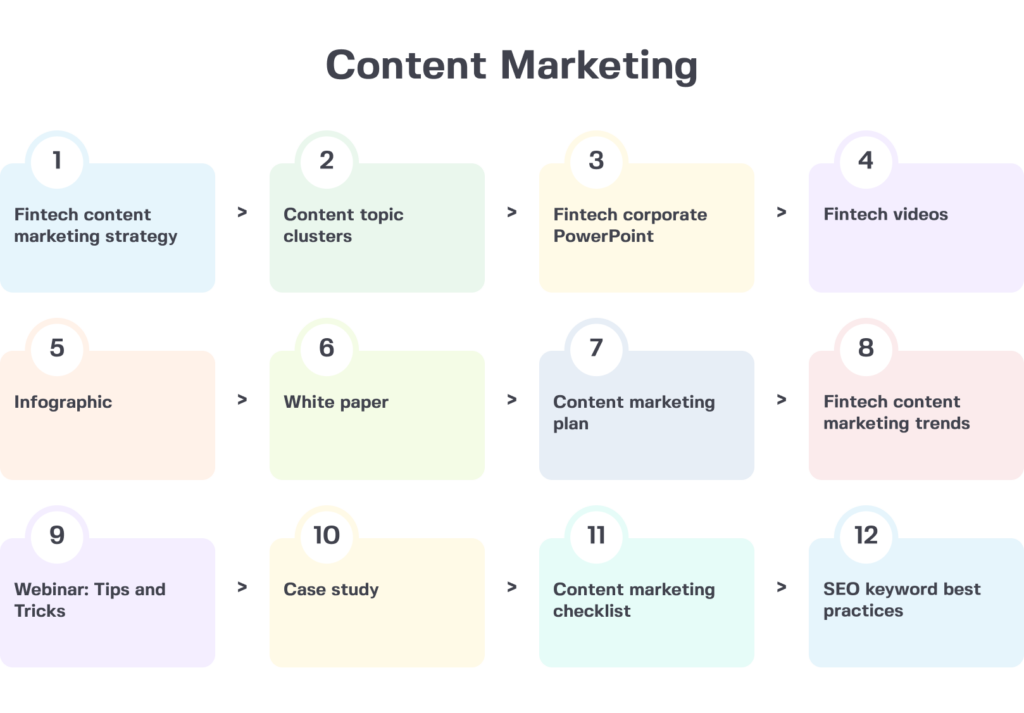
Wrapping it all up
In sum, we can see that content marketing is a powerful tool for fintech companies to become attractive to their potential clients and scale while building up a sustainable flow of leads.
However, content marketing strategy implementation can differ greatly depending on the niche and specifics of the fintech company. To make sure you are utilizing the right resources and the best approach, relying on specialists in the field is key. Partnering with a content marketing agency can provide the specialized expertise needed to navigate the unique challenges of the fintech industry and achieve your marketing goals.
At 42DM, we have created and implemented content marketing for numerous fintech clients since 2017, developing our own expert tips and tricks to help our clients scale effectively.
If you are experiencing limited demand or struggling with a difficult cluster and want professional support in your niche field, we are here to open a new universe of content marketing for your fintech business!


